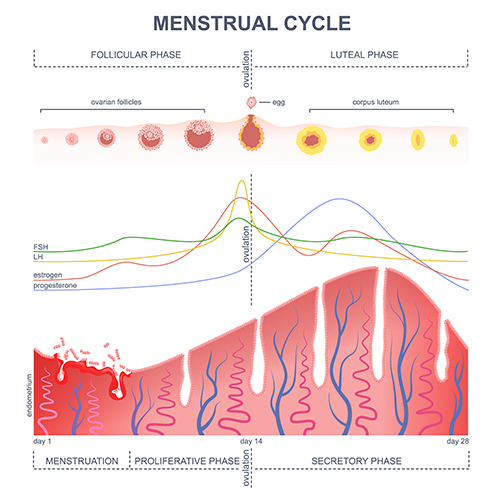Period regularity:
One of the best signs about whether or not you are ovulating is period regularity. Women who have regular periods, every 28-35 days, and don’t skip months, are almost always found to be ovulating. Conversely, women with periods longer than 6 weeks apart are not ovulating regularly.
Blood progesterone measurements:
A simple test for ovulation is a blood test for measuring progesterone. In order for this test to be reliable, it is critically important that it is done at the correct time in the cycle. Progesterone is produced by the follicle after the egg is released and its levels peak around 7 days after ovulation and around 7 days prior to the next period.

This means that for a 28-day cycle, progesterone should be measured on Day 21 (with Day 1 being the first day of the bleed), but for a 35-day cycle, it should be measured on Day 28 (measuring progesterone on Day 21 of a 35-day cycle will detect low progesterone levels and erroneously lead to the conclusion that ovulation is not occurring). If cycle length is more variable, another approach is to measure serial progesterone levels, starting on Day-21 and then weekly thereafter until the next bleed starts. In this way, any progesterone rise associated with ovulation will be detected.
Ovulation kits:
These kits detect the presence of LH in the urine. Note, however, that although ovulation usually follows the LH surge, this is not always guaranteed, so these kits do not actually test for ovulation. Since ovulation is preceded by the LH surge from the pituitary, the rise in LH in the blood filters through into the urine at high enough levels to be detected by the kit. Occasionally, in some women, kits may not produce a reliable result, either because the urine is too dilute or because the design of the kit is not able to identify their unique structure of LH.
Ultrasound scanning:
Ultrasound scanning can be used to track development of the lead follicle. When combined with blood tests, it is a very accurate way for confirming that ovulation is occurring. A range of other information can be obtained by scanning. See my section on the Menstrual Cycle and Ovulation Tracking for more information.
